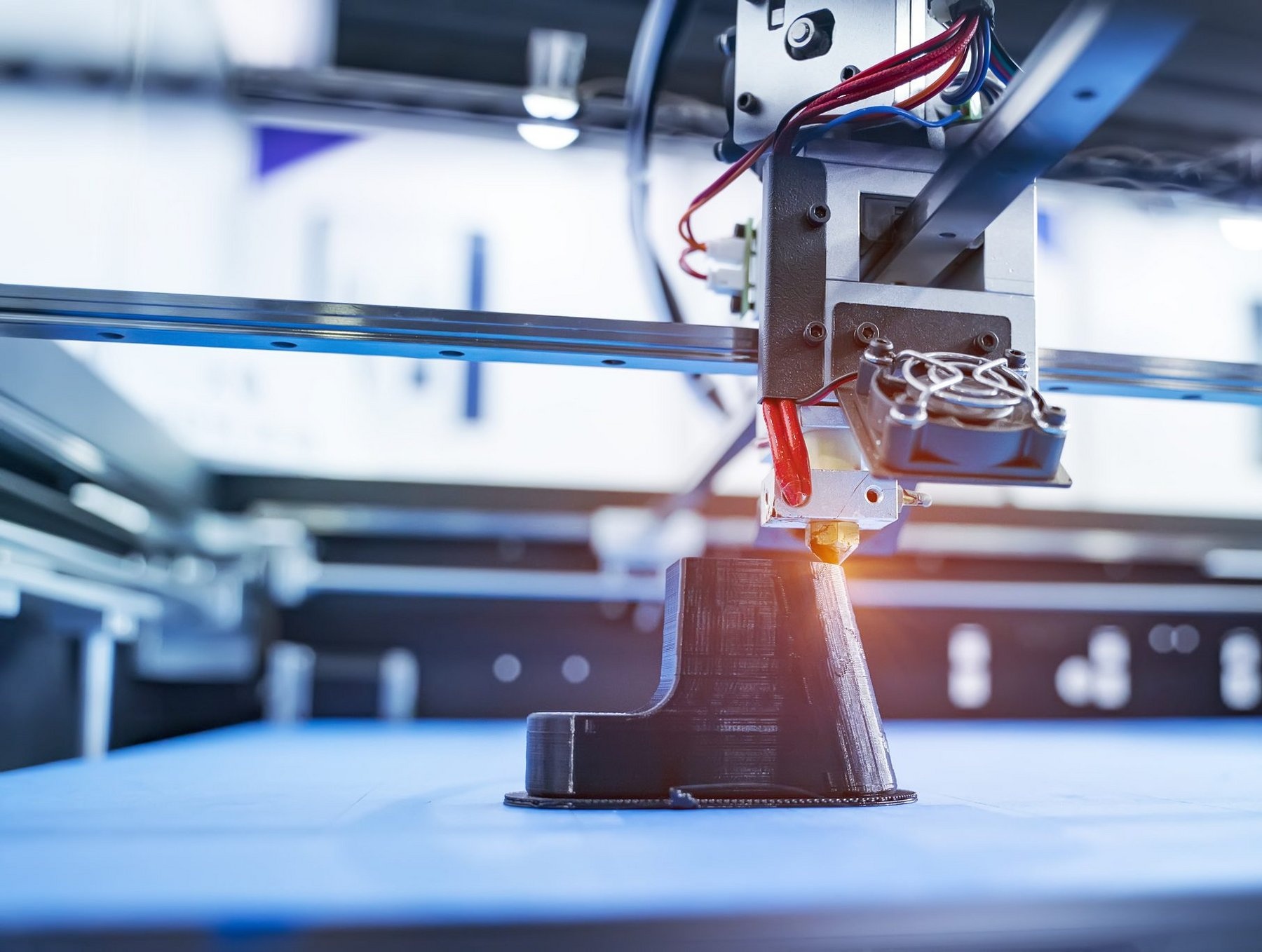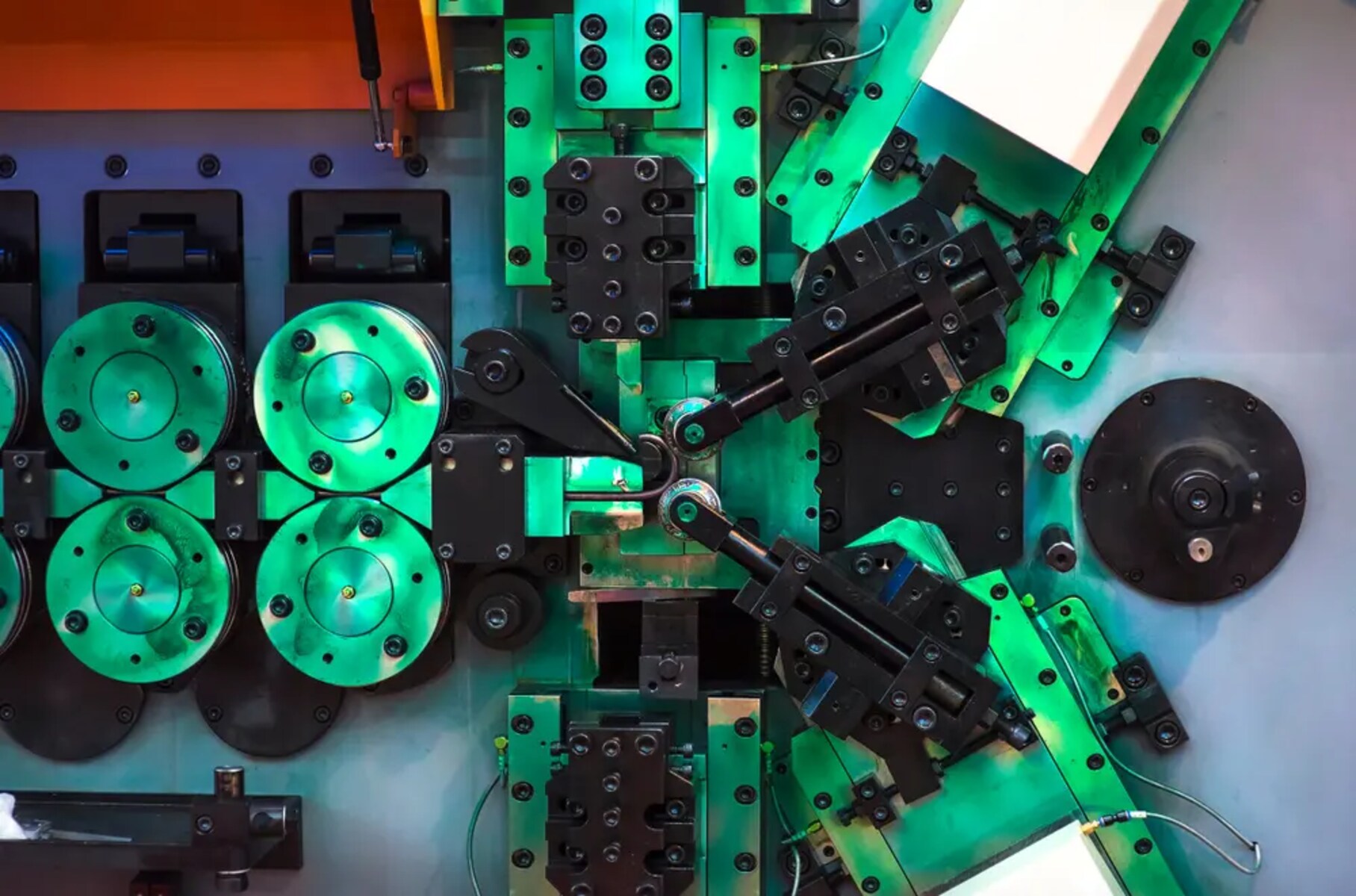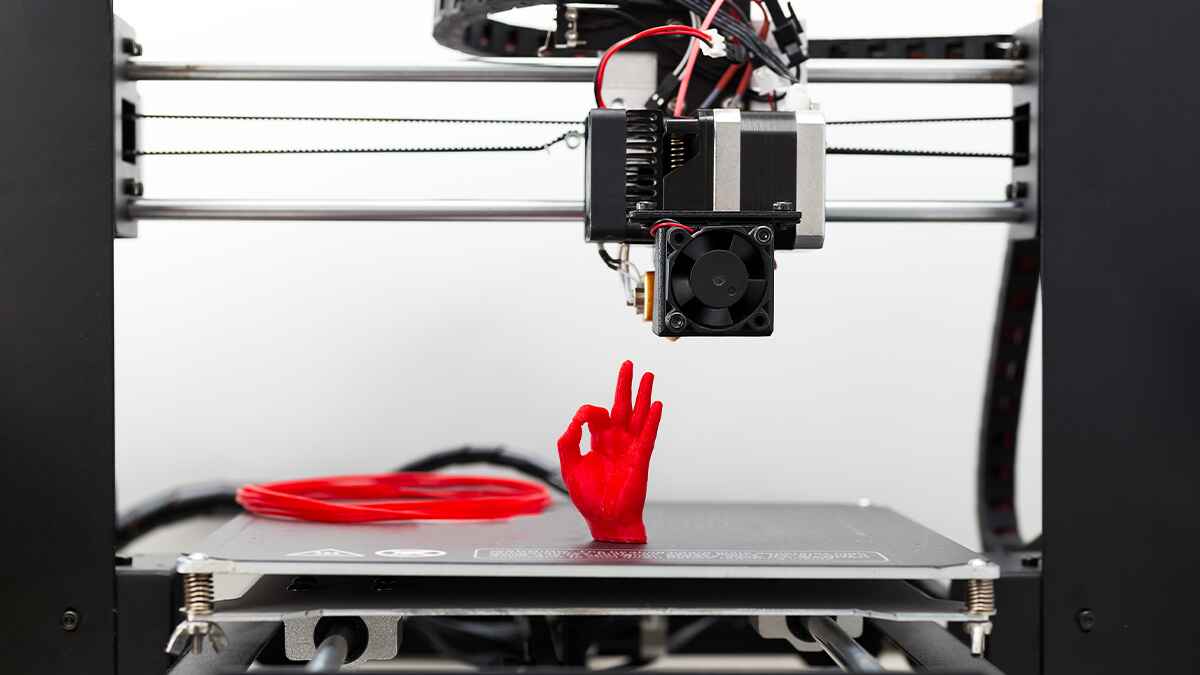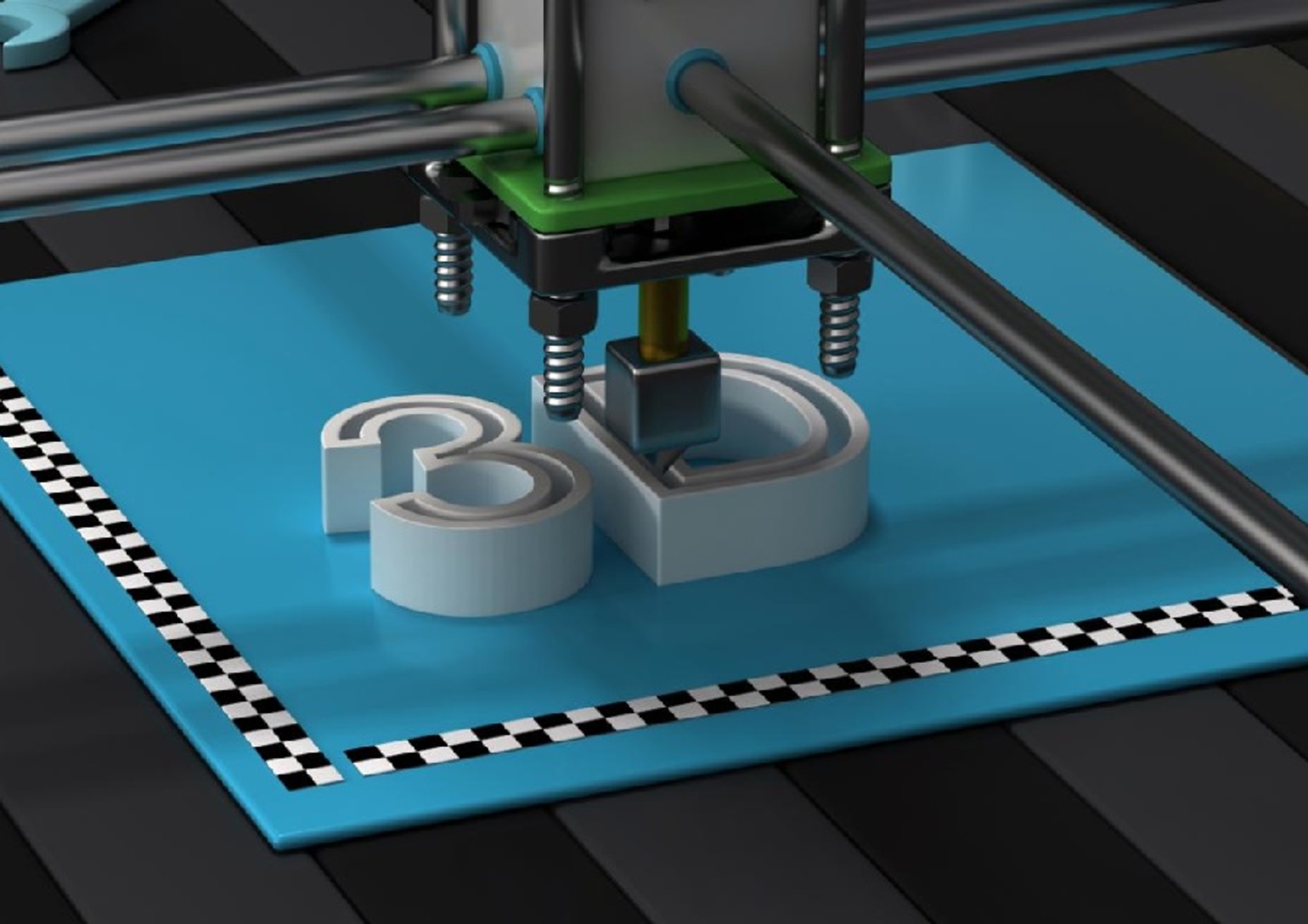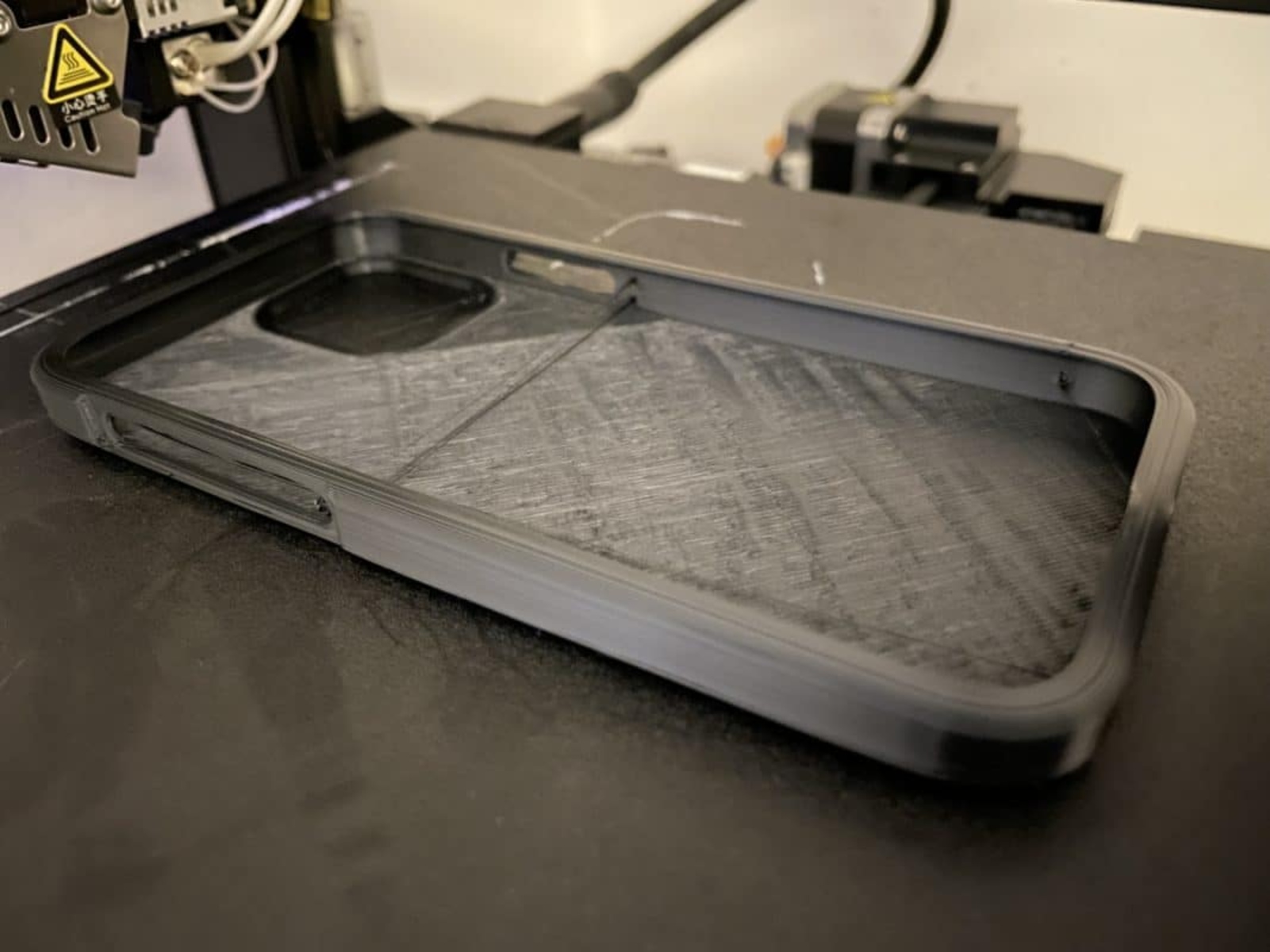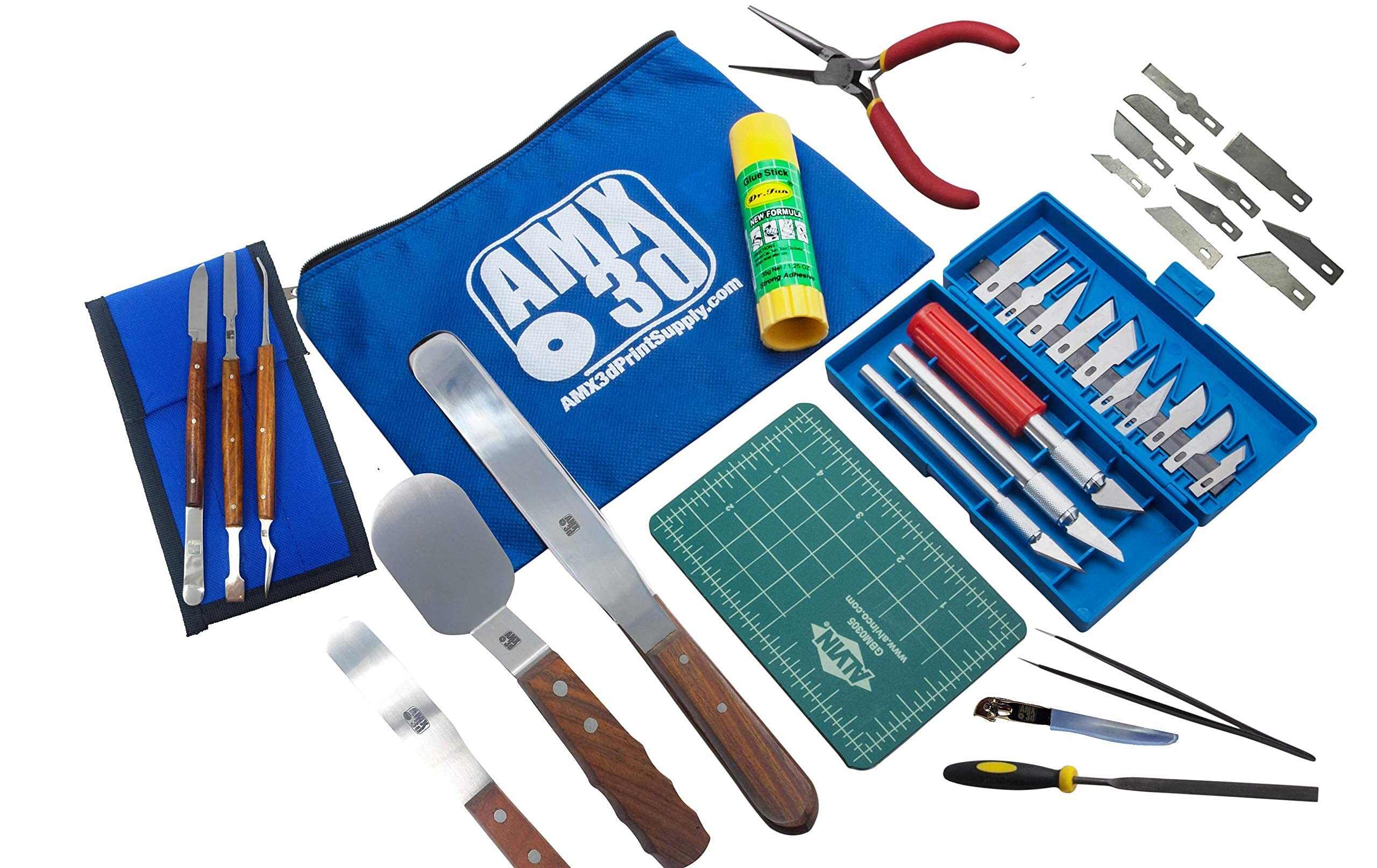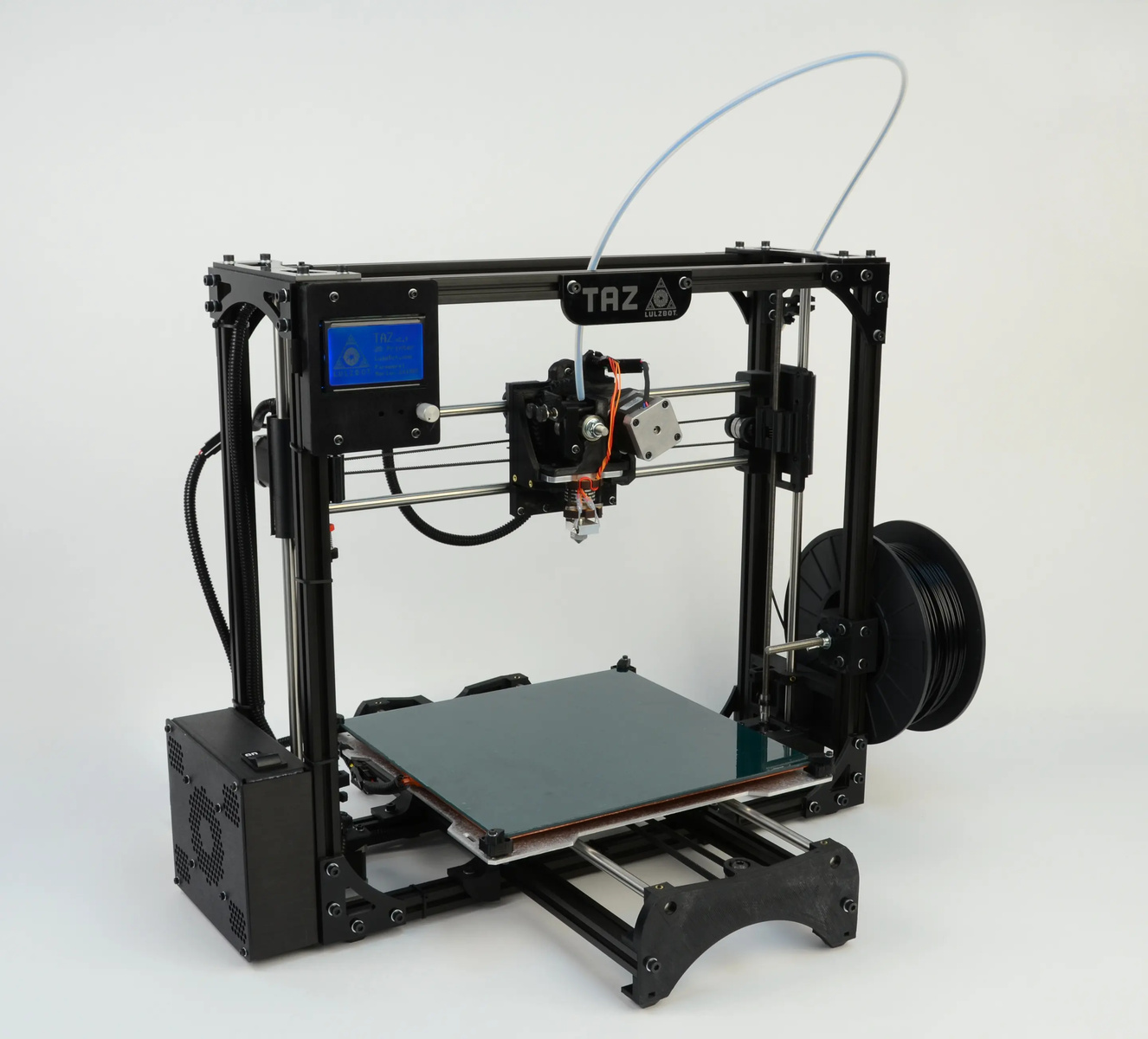Introduction
Welcome to the world of 3D printing! Over the past decade, this groundbreaking technology has revolutionized the manufacturing industry and opened up a world of possibilities. From humble beginnings as a niche prototyping tool, 3D printing has now emerged as a game-changing technology for a wide range of applications.
So, what exactly is 3D printing? Simply put, it is a process of creating three-dimensional objects by adding layers upon layers of material. Unlike traditional manufacturing methods that involve subtracting material through cutting or molding, 3D printing builds objects layer by layer, allowing for intricate designs and complex geometries that were once impossible to achieve.
The beauty of 3D printing lies in its versatility. It can be used to create everything from small household items to large-scale industrial components. With its ability to produce customized designs quickly and cost-effectively, 3D printing is changing the way we think about manufacturing.
How does 3D printing work? To create a 3D-printed object, a digital design is first created using computer-aided design (CAD) software. This design is then converted into a series of cross-sectional slices, called layers. These layers are then fed into a 3D printer, which uses various materials such as plastics, metals, or even living cells to build the object layer by layer.
There are several types of 3D printing technologies available, each with its own set of advantages and limitations. These include:
- Fused deposition modeling (FDM)
- Stereolithography (SLA)
- Selective laser sintering (SLS)
- PolyJet
- And more
3D printing offers numerous benefits for manufacturing industries. It allows for rapid prototyping, which significantly speeds up the product development process. It also enables the production of complex, customized designs that would be impossible or costly to create using traditional methods.
However, like any technology, 3D printing also comes with its share of challenges and limitations. The cost of 3D printing materials and machines can be high, making it less accessible for small businesses. The quality and strength of 3D-printed objects can also vary depending on the technology and materials used.
Despite these challenges, the future of 3D printing in manufacturing looks promising. As the technology continues to advance, we can expect faster and more affordable 3D printers, as well as a wider range of materials to choose from. With ongoing research and innovation, 3D printing has the potential to reshape industries and enable new possibilities in manufacturing.
In the following sections of this article, we will explore the different types of 3D printing technologies, the applications of 3D printing in manufacturing, as well as its advantages and challenges. So, fasten your seatbelts and get ready to dive into the exciting world of 3D printing!
What is 3D Printing?
3D printing, also known as additive manufacturing, is a revolutionary manufacturing process that builds three-dimensional objects by adding material layer by layer. Unlike traditional manufacturing methods, which involve removing material through cutting or molding, 3D printing creates objects by adding successive layers of material one on top of the other.
This process starts with a digital design of the desired object, created using computer-aided design (CAD) software or obtained from 3D scanning technology. The design is then sliced into thin cross-sectional layers, and each layer is sent to the 3D printer.
The 3D printer interprets the digital design instructions and begins creating the object layer by layer. It works by depositing or fusing materials in a controlled manner to build the desired shape. The materials used can vary depending on the type of 3D printing technology, ranging from plastics and metals to ceramics and even biological materials.
One of the key advantages of 3D printing is its ability to produce complex shapes and geometries that would be difficult or impossible to achieve with traditional manufacturing methods. This is because 3D printing builds objects layer by layer, allowing for intricate designs, internal cavities, and overhangs without the need for additional assembly or tooling.
Furthermore, 3D printing offers a high degree of customization. With traditional manufacturing, producing a one-off or personalized item can be costly, as it often requires creating unique molds or tooling. In contrast, 3D printing allows for easy customization, as the digital design can be easily modified to fit specific requirements or preferences.
3D printing is also highly versatile. It can be used across a wide range of industries and applications, including aerospace, automotive, healthcare, fashion, and consumer goods. Its applications range from rapid prototyping and product development to creating end-use parts, functional prototypes, architectural models, and even human tissue and organs.
As the technology continues to advance, 3D printing is becoming more accessible and affordable. Desktop 3D printers are now available for personal use, making it possible for hobbyists, designers, and small businesses to bring their ideas to life. Industrial-grade 3D printers are also evolving, with faster printing speeds, improved precision, and a wider selection of materials.
In the next sections, we will delve deeper into the different types of 3D printing technologies, their applications, advantages, and challenges. So, stay tuned to discover the fascinating world of 3D printing and its impact on the manufacturing industry.
How Does 3D Printing Work?
3D printing, also known as additive manufacturing, is a fascinating process that brings digital designs to life by creating physical objects layer by layer. But how exactly does 3D printing work?
The process starts with a digital 3D model of the object, which is created using computer-aided design (CAD) software or obtained from scanning an existing object using 3D scanning technology. The digital model is then sliced into thin cross-sectional layers, typically ranging from 0.1 to 0.3 millimeters in thickness.
Once the digital model is segmented into layers, it is sent to the 3D printer. The 3D printer reads each layer and starts building the object from the bottom up. It does so by depositing or fusing materials according to the design specifications.
There are several types of 3D printing technologies, each with its own specific process. However, the basic principle remains the same: adding layers of material to create a three-dimensional object. Here are a few common 3D printing technologies:
- Fused Deposition Modeling (FDM): FDM is one of the most widely used 3D printing technologies. It works by extruding a filament of thermoplastic material, such as ABS or PLA, layer by layer. The filament passes through a heated nozzle, which melts the material and deposits it onto the build platform.
- Stereolithography (SLA): SLA uses a liquid photopolymer resin as the raw material. The resin is cured and hardened by a UV laser or other light sources, which selectively solidify the material layer by layer to create the object.
- Selective Laser Sintering (SLS): SLS involves using a laser to selectively fuse powdered material, typically nylon or other polymers, to create each layer. The process takes place in a build chamber filled with a thin layer of powdered material, and the laser selectively sinters the powder to solidify the desired shape.
- PolyJet: PolyJet technology works by jetting tiny droplets of liquid photopolymer onto the build platform. The droplets are immediately cured with UV light, allowing for highly detailed and multi-material prints.
As the 3D printer builds each layer, it takes into account the precise dimensions and geometry specified in the digital model. Some 3D printers have multiple print heads or extruders, which allow for the simultaneous use of different materials or colors. This enables the creation of more complex and visually appealing objects.
3D printing offers a wide range of materials, including plastics, metals, ceramics, and even living cells. Each material has its own properties and characteristics, making it suitable for specific applications. For example, plastics like ABS and PLA are commonly used for prototyping and functional parts, while metals such as titanium and aluminum are used in aerospace and automotive industries.
3D printing is not only limited to solid objects but can also be used to create objects with internal structures, cavities, and complex shapes. This is because the layer-by-layer construction allows for intricate designs that traditional manufacturing methods cannot achieve without additional assembly or tooling.
Now that we have a basic understanding of how 3D printing works, let’s explore the wide range of applications and the pros and cons of this groundbreaking technology in the field of manufacturing.
Types of 3D Printing Technologies
There are several types of 3D printing technologies available today, each with its own unique process and characteristics. These technologies are constantly evolving, pushing the boundaries of what is possible in additive manufacturing. Let’s take a closer look at some of the most common types of 3D printing technologies:
- Fused Deposition Modeling (FDM): FDM is one of the most widely used 3D printing technologies. It works by extruding a thermoplastic filament through a heated nozzle, which deposits the material layer by layer to create the object. FDM is known for its versatility, affordability, and ease of use, making it popular among hobbyists and professionals alike.
- Stereolithography (SLA): SLA uses a liquid photopolymer resin as the raw material. The resin is cured and solidified by a UV laser or other light sources, selectively solidifying the material layer by layer to create the object. SLA is known for its high level of detail and accuracy, making it ideal for creating intricate prototypes and highly detailed parts.
- Selective Laser Sintering (SLS): SLS technology involves using a laser to selectively fuse powdered material, typically nylon or other polymers. The laser sinters the powder to create each layer, and as the object is built layer by layer, any unused powder acts as support material. SLS offers great design freedom and can produce complex geometries without the need for additional support structures.
- PolyJet: PolyJet technology works by jetting tiny droplets of liquid photopolymer onto the build platform. The droplets are immediately cured with UV light, allowing for highly detailed and multi-material prints. PolyJet offers a wide range of material options and can produce objects with smooth surfaces and fine details.
- Selective Laser Melting (SLM): SLM uses a high-powered laser to selectively melt and fuse metallic powders, layer by layer, to create complex metal parts. It is commonly used in industries such as aerospace and medical where strong and precise metal components are required.
These are just a few examples of the various 3D printing technologies available today. Each technology has its own advantages and limitations, and the choice of which technology to use depends on the specific requirements of the project.
It’s worth noting that 3D printing technologies are continuously advancing and new technologies are being developed. Researchers and engineers are constantly exploring innovative ways to improve speed, precision, material options, and the scale of 3D printing.
Additionally, hybrid 3D printing technologies are emerging, combining multiple technologies in a single system. This allows for the integration of different materials and processes, opening up new possibilities for creating complex and functional objects.
Now that we have explored the types of 3D printing technologies available, let’s delve into the benefits and challenges of implementing 3D printing in the manufacturing industry.
Pros and Cons of 3D Printing in Manufacturing
3D printing offers numerous advantages that have made it increasingly popular in the manufacturing industry. However, like any technology, it also comes with its own set of challenges. Let’s explore the pros and cons of 3D printing in manufacturing:
Pros of 3D Printing in Manufacturing:
- Rapid Prototyping: 3D printing allows for quick and cost-effective prototyping. It significantly reduces the time and cost involved in creating prototypes, enabling manufacturers to iterate and refine designs more efficiently.
- Complex Geometries: With 3D printing, manufacturers can produce objects with intricate designs and complex geometries. Traditional manufacturing methods often require additional assembly or tooling to achieve such shapes, making 3D printing a preferred choice for creating unique and customized designs.
- Customization: 3D printing offers a high level of customization. Manufacturers can easily modify designs to meet specific requirements or preferences, without the need for costly tooling changes. This opens up opportunities for personalized products and small-batch production.
- Reduced Waste: Unlike subtractive manufacturing methods, 3D printing is an additive process that only uses the necessary amount of material. This leads to minimal waste generation and increased sustainability in manufacturing.
- Tooling Cost Savings: Traditional manufacturing often requires expensive molds, dies, and tooling to produce specific parts. With 3D printing, the need for costly tooling is reduced or eliminated, resulting in significant cost savings for manufacturers.
Cons of 3D Printing in Manufacturing:
- Limited Material Selection: While 3D printing offers a growing range of materials, the selection is still more limited compared to traditional manufacturing methods. This can pose challenges when specific material properties or certifications are required for certain applications.
- Quality and Strength Variability: The quality and strength of 3D-printed objects can vary depending on the printing technology, material, and process parameters. Achieving consistent and reliable quality can be a challenge, especially for critical applications in industries like aerospace or healthcare.
- Production Speed: In some cases, 3D printing can be slower compared to traditional manufacturing methods, especially when producing large quantities of parts. Mass production using 3D printing may not be as efficient as other high-volume manufacturing processes.
- Equipment and Training Costs: Investing in 3D printing equipment and the necessary training can be costly for manufacturers, especially for small businesses. Additionally, ongoing maintenance and software updates require continuous investment.
- Intellectual Property (IP) Concerns: 3D printing opens up new challenges in terms of protecting intellectual property. As 3D printers become more accessible, the risk of unauthorized duplication of copyrighted designs increases.
Despite these challenges, the benefits of 3D printing in manufacturing are significant and the technology continues to advance. With ongoing research and development, 3D printing has the potential to reshape the manufacturing landscape and bring about new possibilities.
In the next sections, we will explore the applications of 3D printing in manufacturing and delve deeper into its advantages and challenges in specific industries.
Applications of 3D Printing in Manufacturing
3D printing has found a wide range of applications in the manufacturing industry, revolutionizing various sectors by offering new possibilities in product design, production, and customization. Let’s explore some of the key applications of 3D printing:
- Rapid Prototyping: One of the most common applications of 3D printing in manufacturing is rapid prototyping. By quickly and cost-effectively creating prototypes, manufacturers can evaluate and test designs before committing to large-scale production. This enables faster iteration, reduces time-to-market, and saves costs associated with traditional prototyping methods.
- Tooling and Jigs: 3D printing allows for the production of custom tooling and jigs, which are essential in manufacturing processes. From assembly fixtures to molds and patterns, 3D printing enables the creation of precise tools that improve efficiency and accuracy in various manufacturing operations.
- Customized and Personalized Products: 3D printing enables manufacturers to offer customized and personalized products on a mass scale. With the ability to easily modify designs, manufacturers can cater to individual customer preferences and create unique products that align with specific requirements. This customization potential spans industries such as consumer goods, healthcare, and automotive.
- Small-Batch Production: 3D printing is ideal for small-batch production, where traditional manufacturing methods may be cost-prohibitive. By eliminating the need for costly molds or tooling, manufacturers can produce limited quantities of products efficiently and economically.
- Spare Parts Manufacturing: 3D printing has transformed the production of spare parts, particularly for obsolete or hard-to-find components. Instead of relying on expensive and time-consuming retooling processes, manufacturers can 3D print replacement parts on demand, reducing downtime and inventory costs.
- Custom Medical Devices and Prosthetics: The medical industry has embraced 3D printing for the production of custom medical devices, implants, and prosthetics. By using patient-specific scans, healthcare providers can create tailored solutions that fit patients’ unique anatomies, improving comfort, functionality, and ultimately, patient outcomes.
- Architectural Modeling: Architects and designers utilize 3D printing to create detailed architectural models, facilitating visualization, and communication of design concepts. 3D printed models help clients and project stakeholders better understand the spatial arrangements, scale, and aesthetics of a design before construction begins.
- Aerospace and Automotive Components: 3D printing offers tremendous advantages in the aerospace and automotive industries. Complex components with intricate geometries, lightweight structures, and improved functionality can be produced with 3D printing. This technology allows for consolidation of multiple parts into a single piece, reducing assembly and weight, and ultimately enhancing performance.
These are just a few examples of how 3D printing is transforming the manufacturing landscape across multiple industries. As the technology continues to evolve, its applications will expand further, enabling more innovative designs, improved efficiency, and increased customization.
In the next sections, we will explore the specific advantages and challenges of implementing 3D printing in different sectors of manufacturing.
Advantages of 3D Printing in Manufacturing
3D printing has brought about numerous advantages to the manufacturing industry, transforming traditional processes and enabling new possibilities in design, production, and customization. Let’s explore some of the key advantages of 3D printing:
- Rapid Prototyping: One of the major advantages of 3D printing is its ability to accelerate the prototyping phase. With 3D printing, manufacturers can quickly produce functional prototypes, allowing for design validation, testing, and iteration in a fraction of the time and cost compared to traditional prototyping methods. This speeds up the product development cycle and enables faster time-to-market.
- Design Freedom: 3D printing offers unparalleled design freedom, allowing manufacturers to create complex geometries and intricate structures that would be challenging or impossible with traditional manufacturing methods. This opens up opportunities for innovative designs, lightweight structures, and customized products tailored to specific requirements.
- Cost Savings: In certain scenarios, 3D printing can lead to significant cost savings. With 3D printing, manufacturers eliminate or reduce the need for expensive molds, tooling, and assembly processes, which can result in substantial upfront cost savings, especially for small production runs or highly customized products.
- Reduced Material Waste: 3D printing is an additive manufacturing process, meaning it only uses the necessary amount of material to build an object. Unlike subtractive manufacturing methods that generate significant material waste, 3D printing minimizes waste and contributes to a more sustainable manufacturing process.
- Customization and Personalization: The ability to easily modify digital designs makes 3D printing an excellent choice for customization and personalization. Manufacturers can tailor products to individual customer needs, preferences, and specifications, opening up opportunities for unique, one-of-a-kind products that align with specific requirements.
- Manufacturing Complex Assemblies: 3D printing allows for the creation of complex assemblies as fully functional single objects. By consolidating multiple parts into a single print, manufacturers reduce the need for assembly, reducing time, cost, and potential points of failure.
- On-Demand Manufacturing: With 3D printing, manufacturers can embrace on-demand manufacturing, producing parts and products as needed, eliminating the need for large inventories. This streamlines the supply chain, reduces storage costs, and enables a more agile and responsive approach to production.
These advantages have made 3D printing a game-changer in various industries, driving innovation, efficiency, and customization. While there are still challenges to overcome and limitations to address, the benefits of 3D printing in manufacturing are undeniable.
In the next sections, we will explore the specific challenges and limitations of implementing 3D printing in manufacturing, giving a holistic view of this transformative technology.
Challenges and Limitations of 3D Printing in Manufacturing
While 3D printing offers numerous advantages, it also comes with its fair share of challenges and limitations. Understanding these challenges is essential for manufacturers looking to adopt 3D printing in their production processes. Let’s explore some of the key challenges and limitations of 3D printing in manufacturing:
- Material Limitations: Despite the growing range of materials available for 3D printing, the selection is still more limited compared to traditional manufacturing methods. Certain materials or material properties required for specific applications may not be readily available for 3D printing, posing challenges for industries with stringent material requirements, such as aerospace or healthcare.
- Quality and Consistency: The quality and consistency of 3D-printed objects can vary depending on factors such as the printing technology, materials used, and process parameters. Achieving consistent and reliable quality can be challenging, especially for critical applications where accuracy, strength, and durability are crucial.
- Print Speed and Scaling: While 3D printing offers great flexibility and customization, it is generally slower compared to traditional manufacturing methods. Printing large quantities or scaling up production with 3D printing can be time-consuming, making it less efficient for mass production compared to methods like injection molding or casting.
- Equipment and Training Costs: Investing in 3D printing equipment and the necessary training can be a significant upfront cost for manufacturers, especially for small businesses. Additionally, ongoing maintenance, software updates, and the need for skilled operators require continuous investment for optimal performance and utilization.
- Post-Processing and Finishing: 3D-printed objects often require post-processing and finishing to achieve the desired surface finish and mechanical properties. Depending on the complexity of the object and the printing technology used, post-processing can involve tasks such as sanding, polishing, or applying additional coatings. This adds time, effort, and cost to the manufacturing process.
- Intellectual Property (IP) Concerns: As 3D printing becomes more accessible, the risk of unauthorized duplication of copyrighted designs and intellectual property increases. Protecting IP is a challenge in the world of 3D printing, as anyone with access to a 3D printer can potentially replicate and reproduce designs without proper authorization.
- Economic Feasibility: Despite its advantages, 3D printing may not always be economically feasible for all manufacturing applications. The cost of 3D printing materials, especially for specialized or high-performance materials, can be considerably higher than traditional manufacturing materials. Manufacturers must carefully evaluate the cost-effectiveness and viability of 3D printing for their specific needs.
Addressing these challenges and limitations requires ongoing research, development, and innovation in the field of 3D printing. As the technology continues to advance, manufacturers can expect improvements in material options, printing speed, quality control, and cost-effectiveness.
Despite these challenges, the benefits and potential of 3D printing in manufacturing are significant. In the next section, we will explore the future outlook and potential advancements of 3D printing in the manufacturing industry.
Future of 3D Printing in Manufacturing
The future of 3D printing in manufacturing holds great promise, as advancements continue to push the boundaries of this technology and unlock new possibilities. Here are some key areas that indicate the potential future of 3D printing in manufacturing:
- Expanded Material Options: One area of ongoing research and development is the expansion of material options for 3D printing. Researchers are exploring new materials, including advanced polymers, metals, ceramics, and biomaterials. This will open up opportunities for a wider range of applications, from high-performance aerospace components to bioengineered organs.
- Faster Printing Speeds: Improving the speed of 3D printing is another focus for future advancements. Researchers are exploring new printing techniques, such as continuous printing and high-speed printing, which will significantly reduce print times and increase overall efficiency. This will make 3D printing more viable for large-scale production and accelerate the adoption of this technology.
- Multi-Material and Multi-Functional Printing: Advancements in multi-material 3D printing will enable the creation of complex structures and functional components with different materials in a single print. This will lead to enhanced functionality and improved performance in a wide range of applications, from electronics and robotics to healthcare and automotive industries.
- Printed Electronics and Embedded Systems: The integration of electronics and 3D printing is an emerging field with immense potential. Researchers are exploring ways to embed sensors, circuits, and other electronic components directly into 3D-printed objects. This will enable the production of smart, interactive, and customized products with built-in functionality.
- Bio-Printing and Tissue Engineering: 3D printing has already made significant strides in the field of bio-printing and tissue engineering. Researchers are working on perfecting the printing of human tissue and organs, which has the potential to revolutionize healthcare with personalized organ transplants and drug testing on 3D-printed organ models.
- Printed Construction: 3D printing is being explored as a means for constructing buildings and infrastructure. Large-scale 3D printers capable of printing with concrete or other construction materials are being developed. This has the potential to revolutionize the construction industry, making it faster, more efficient, and environmentally friendly.
Moreover, as 3D printing technology becomes more accessible and affordable, it will become increasingly integrated into existing manufacturing processes. This will enable a hybrid approach, combining traditional manufacturing methods with 3D printing to take advantage of the strengths of each technique.
With ongoing research, collaboration between industries, and advancements in materials, speed, and functionality, 3D printing will continue to push the boundaries of what is possible in manufacturing.
The future of 3D printing in manufacturing holds immense promise, with the potential to revolutionize industries, drive innovation, and meet the demand for more customized, sustainable, and advanced manufacturing solutions.
Conclusion
3D printing has emerged as a transformative technology in the manufacturing industry, offering a wide range of benefits and pushing the boundaries of what is possible in design, production, and customization. This additive manufacturing process has revolutionized prototyping, allowing for rapid iteration and cost-effective testing. It has also opened up new possibilities for complex designs, intricate geometries, and customized products.
While there are challenges and limitations to address, such as material limitations, quality control, and post-processing requirements, the advantages of 3D printing are undeniable. It offers reduced waste, improved customization, cost savings in certain scenarios, and the ability to manufacture complex assemblies without the need for extensive tooling or assembly processes.
The future of 3D printing in manufacturing looks promising. Ongoing research and development are expanding the range of available materials, improving printing speeds, and exploring new applications such as printed electronics and bio-printing. As the technology becomes more affordable and accessible, it is expected to become more integrated into existing manufacturing processes, offering a hybrid approach of traditional and 3D printing methods.
Manufacturers must carefully consider the suitability, cost-effectiveness, and feasibility of 3D printing for their specific needs. Despite the challenges, the potential benefits and future advancements of 3D printing make it an exciting and transformative technology for the manufacturing industry.
As we look ahead, we can anticipate further innovations, advancements, and widespread adoption of 3D printing in manufacturing, leading to increased efficiency, customization, and sustainability in the production of goods.







